Here’s a list of fun educational shadow activities and science experiments for kids with several fun ways to play with shadows to learn about light and shadow outdoors and indoors.
Shadow activities and experiments can help children learn what a shadow is and how shadows are formed through experience. This list of interactive indoor and outdoor shadow activities for toddlers, preschoolers, kindergartners, and elementary-aged kids is perfect for groundhog day on February 2, or year-round fun at home or in the classroom. And, of course, summer break is also a great time to play and learn with shadows. You might also enjoy learning about Imbolc, an ancient spring holiday also on February 2.
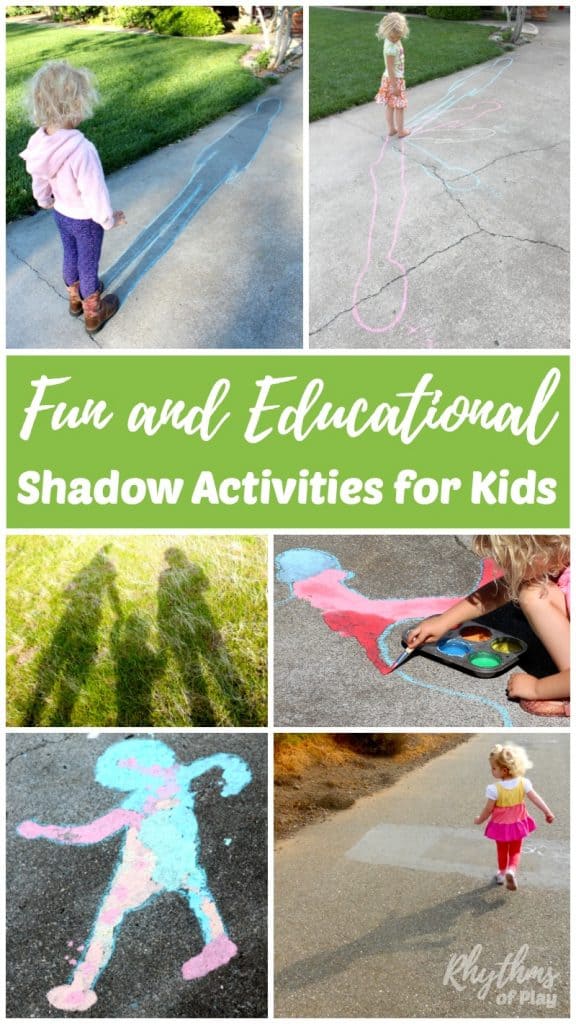
What is a shadow, and how are shadows formed?
This post is filled with interactive outdoor shadow activities for toddlers, preschoolers, kindergartners, and elementary-aged kids that are perfect for groundhog day and year-round fun at home or in the classroom!
A shadow is made when an object, plant, animal, or person blocks light. The thing that blocks the light must be translucent or opaque for a shadow to form because light can pass through transparent objects.
Light travels away from the source in straight lines. When an object blocks a light source, it creates a shadow. Shadows fall away from the light and form in the opposite direction of whatever is blocking the light source. This means that three things must be present to make a shadow.
Related: Kid’s Books That Teach Important Life Lessons
Three things are needed to make a shadow:
- a source of light.
- an object to block it.
- a surface behind the object for the shadow to fall upon.
The sun is a natural light source, while a lamp or flashlight is an artificial light source. And the size and shape of a shadow will depend on the size and position of the light source compared to the relative size and angle of the object blocking the light.
Related: Outdoor Activities for Kids
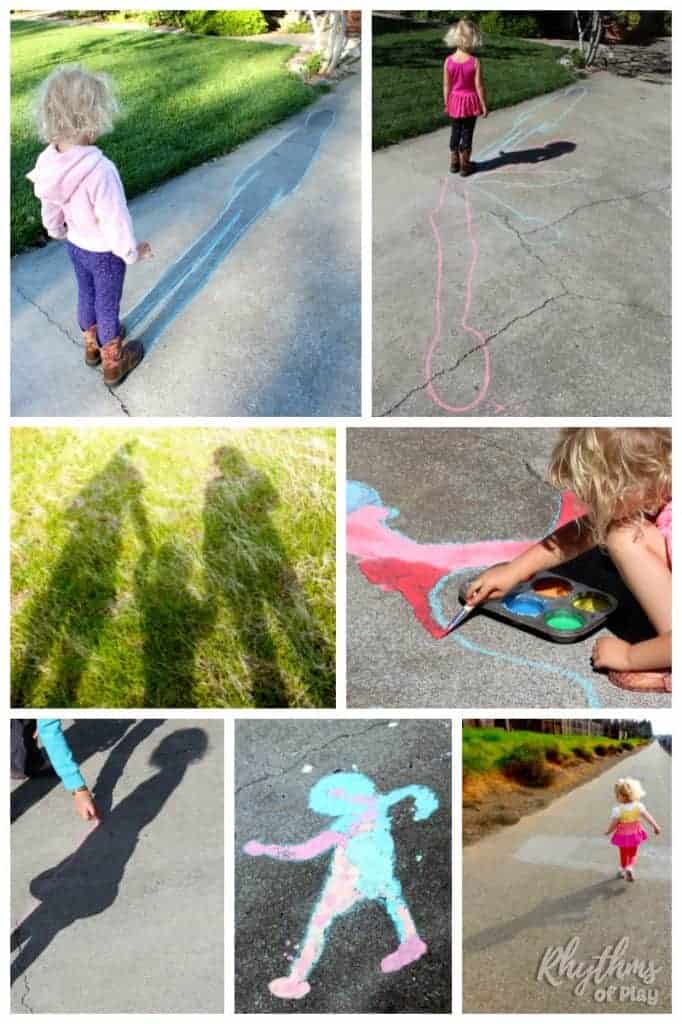
7 Educational Shadow Activities and Science Experiments for kids
This list of educational shadow activities and science experiments makes learning about shadows and how they are formed fun. Try the shadow play ideas and experiments on the list below as a hands-on way for kids to learn more about the sun, shadows, and the science of light. These fun shadow activity ideas are great for groundhog day and year-round learning fun. You might also enjoy this list of Rainy Day Activities.
1. Play with your shadow
There are so many fun ways to play and learn with your shadow. A child’s imagination is an endless source of inspiration. Have a tea party with your shadow, play games with your shadow, or invite some friends to play shadow tag!
How to Play Shadow Tag
Shadow tag is best played outdoors on a sunny day. The main idea is to step on another player’s shadow to “tag” them.
- Start by selecting the player that will be “It” or the “tagger.”
- Before starting play, decide if there will be a “base” or place where players can be temporarily safe from “tagging” if they need a minute to rest and where this “base” will be.
- On the word go!, all players try to keep their shadow from getting tagged by the person that is “It,” while the player that is “It” does their best to step on another player’s shadow to “tag” them.
- When another player is tagged by “It” or the “tagger,” that player then becomes “It.”
- Continue to play until the players decide to end the game of shadow tag.
Chasing Shadow Play
My daughter’s favorite playtime activity with her shadow is to be chased by it. Whenever she notices that her shadow is following her on one of our daily walks, she shrieks with joy and tries to run away from it as if it were chasing her.
She continually looks over her shoulder at it as she runs, chirping with excitement and giggling with joy–Oh, to be a kid again!
Related: Best Board Games for Kids and Families
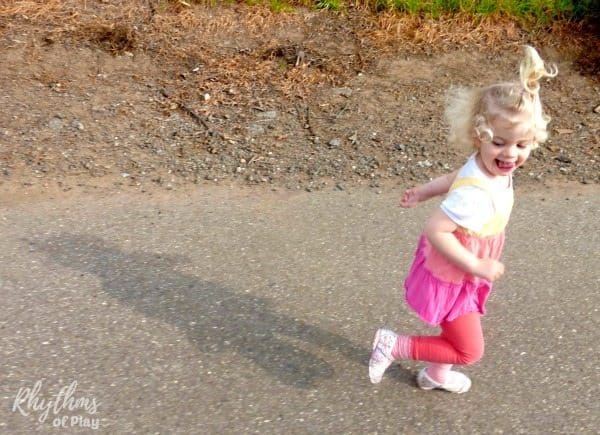
2. Dance with your shadow
Put on some fun music in a sunny outdoor area where children can see their shadows and have fun dancing with them. Feel free to add shaker eggs and other musical instruments of your choice.
Add in more fun by turning off and on the music and having your kids freeze when the music stops. Your kids will have difficulty not giggling at their silly frozen shadows. Speaking of music, are you looking for kids’ music that won’t drive you nuts, click on the link!
3. Experiment with Shadows
Blocking different light sources with different objects at different angles will form different kinds of shadows.
Encourage children to experiment and have fun playing and learning with shadows. Invite children to try any of the simple shadow experiments listed below.
- Play with natural sources of light versus artificial sources of light.
- Experiment with casting shadows on a surface–wall, floor, table, etc.
- See what happens when you move objects at different angles.
- Experiment with the difference between translucent, transparent, and opaque objects.
Related: Science Experiment with Watercolor Resist Mediums
4. Human Sundial Shadow Science Experiment
This shadow experiment for kids is both fun and educational. Making human sundials with my classmates in elementary school was so much fun that I decided to try it with my daughter as a homeschool lesson. She loved it! Pop over to look at our Human Sundial Shadow Science Experiment to learn how to conduct shadow science experiments with children at home or in the classroom.
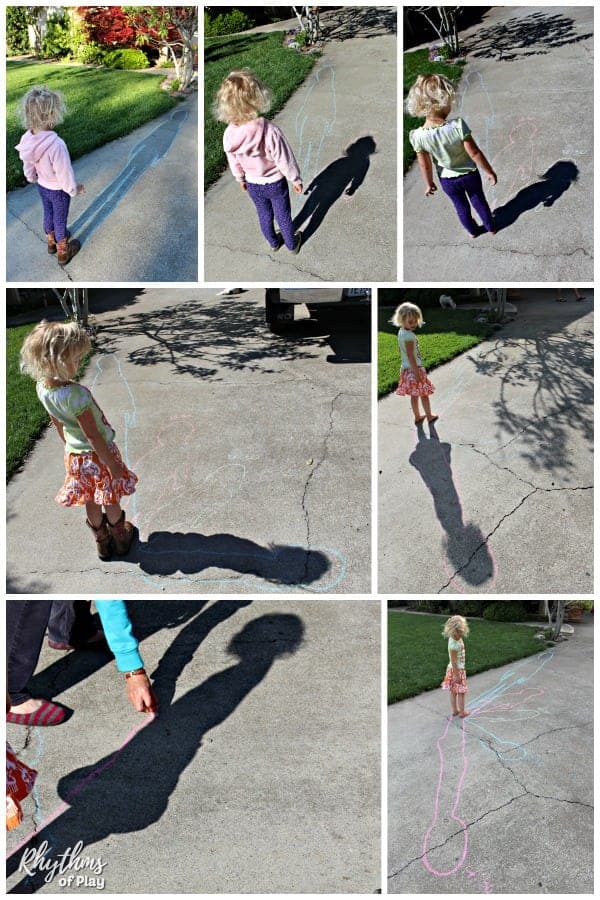
5. Make Shadow Art
Making art with shadows is another fun shadow activity for kids. Shadow art can be done indoors, with artificial light, and outdoors in the sunlight.
There are two primary ways to create shadow art. One way to create shadow art is by tracing or drawing shadows to create shadow art. Another creative way to make shadow art is by making sculptures that cast realistic shadows on a wall, table, or surface.
Shadow sculptures are fun to make with random objects, pieces of wood, paper, and even junk! You can use anything with a bit of creativity to cast artistic shadows upon a wall, floor, or another surface. Some of the shadow art in the video below will blow your mind!
Indoor Shadow Art Instructions:
- Choose a light source to cast shadows upon objects, etc.
- Find an object, or objects, to block the light and create shadows with them.
- Either create art with shadows similar to the sculptures shown in the video or trace and color the shadows to create art.
Shadow Art Supplies for Tracing and Coloring Shadows:
Use any or all of the following to draw or color shadows to create shadow art. Look at this list of the best art supplies for our favorite recommendations, or visit our Amazon Store.
- Drawing paper, watercolor paper, or poster board
- Crayons
- Colored pencils
- Markers
- Pastels
- Charcoal
- Chalk
- Chalk paint
- Tempura paint
- Watercolor paint
- Acrylic Paint
Outdoor Shadow Art Instructions:
Bring art supplies outside to an area where the sun is shining and look for shadows to trace, shade, or paint. Place a piece of paper under the shadow, choose your artistic medium, and get creative! Or, try Shadow Art Outdoor STEAM for kids
6. Make Shadow Puppets
Making shadow puppets is another form of shadow art that makes experimenting with blocking light and creating shadows fun for kids.
Invite children to block light with their hands and arms to cast animals and other fun shapes onto a wall, screen, or curtain. Simple shadow puppets include a dog, a bunny, and a bird. The video below shares how to make shadow animals with your hands–watch it with the kids!
7. Take Pictures of Your Shadow Antics
This shadow activity is always a hit with my daughter. You can see some of our shadow fun in the photo of our family in the shadow below.
Taking pictures of your shadow can be tricky, and it’s hard to find a way to take a picture without seeing the camera in the photo. In the image below, I held a point-and-shoot camera at my chest.
It’s also hard to take pictures of other people’s shadows without finding some part of your own shadow in the frame, but it is sure fun to try!
Shadow Science for Kids
The educational activities and shadow science experiments for kids listed above are a hands-on way to learn about shadows, the sun, and the science of light, and that makes most of these activities perfect for Groundhog’s Day on February second, or year-round fun. You might also enjoy learning about Imbolc, an ancient sabbat festival that shares the same date.
More Activities and Experiments for Kids
- Sorting and Classifying Rocks
- Coin Sorting Montessori Sensorial Activity
- Experiment with Watercolor Resist
- Rock Balancing and Stone Stacking
- Rainbow Rainy Day Art
- Magnet Fishing: Cool Science for Kids
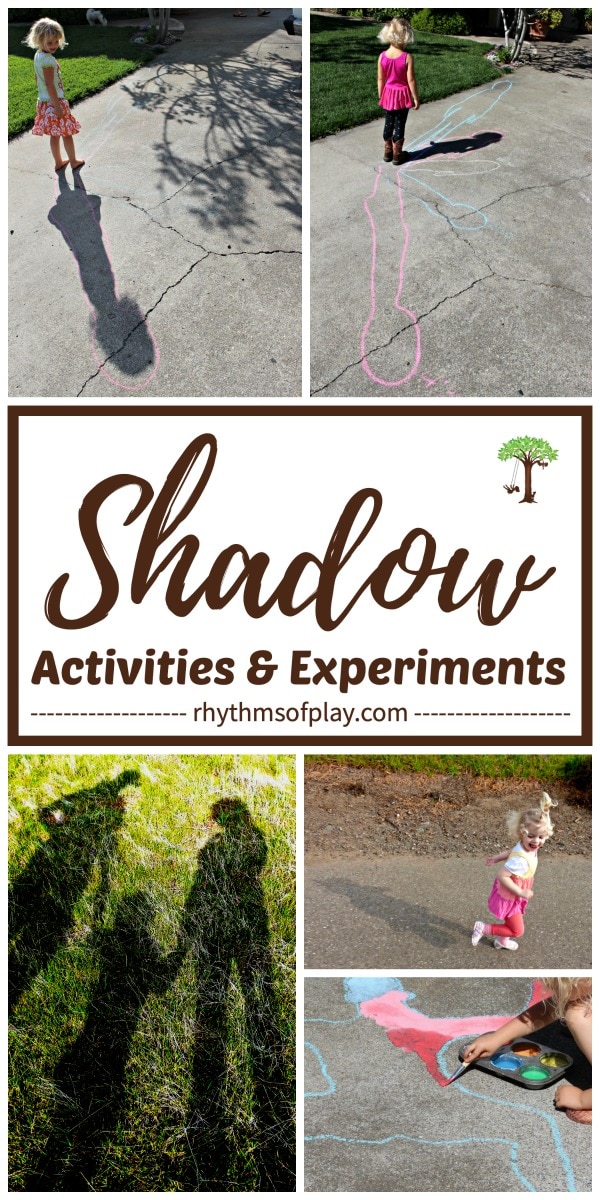

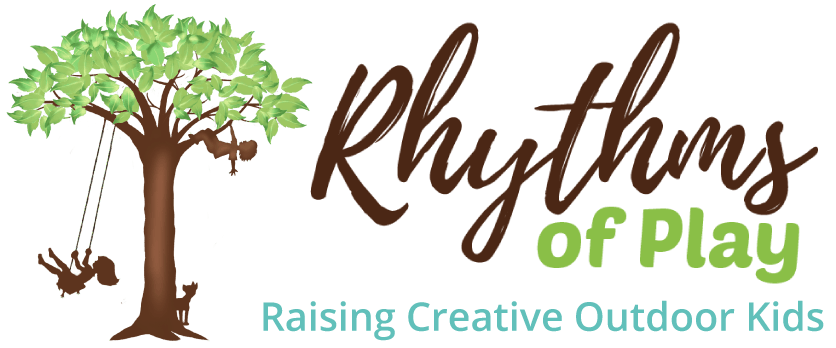
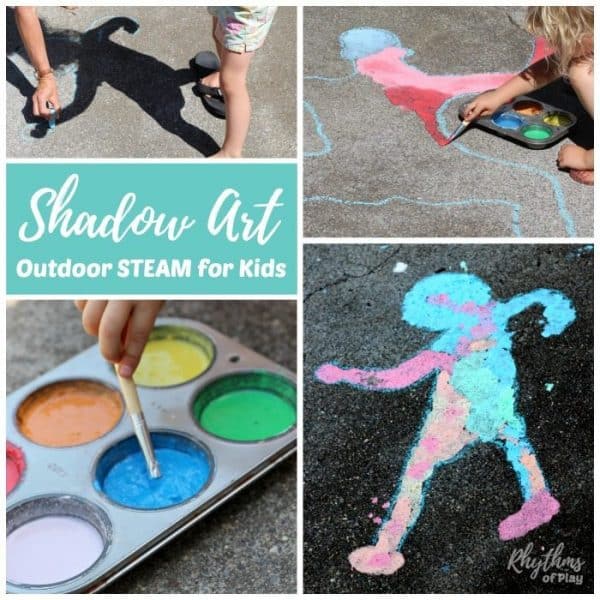
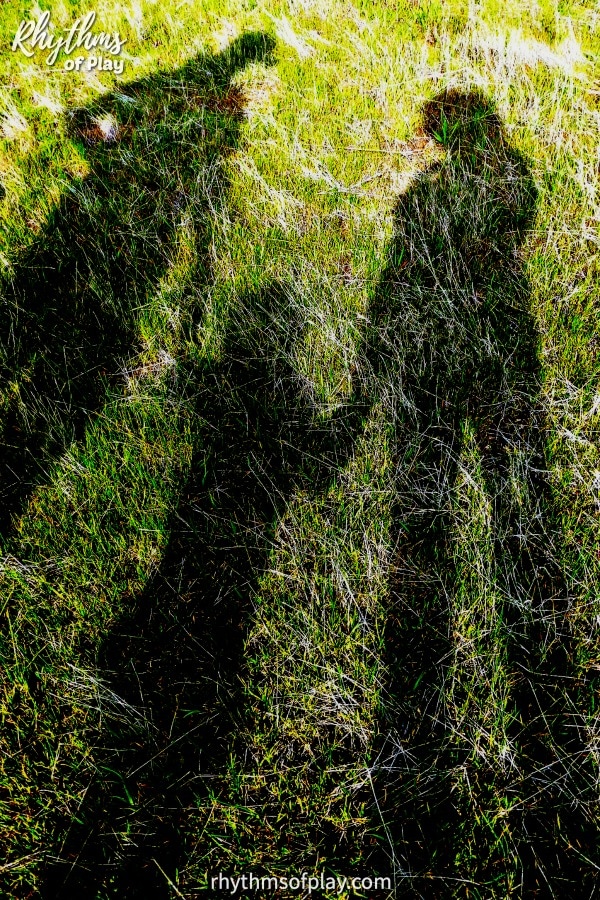


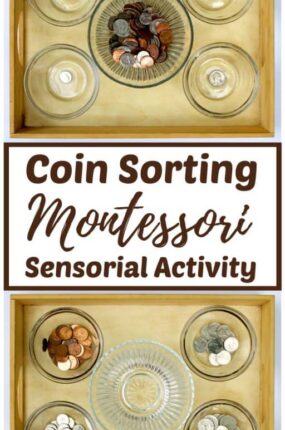
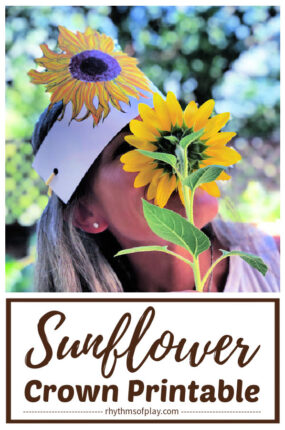

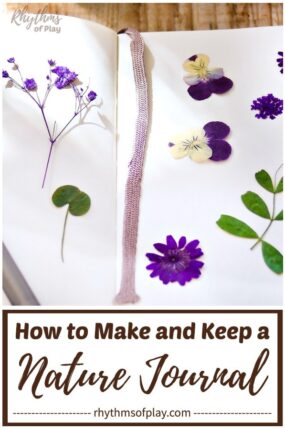
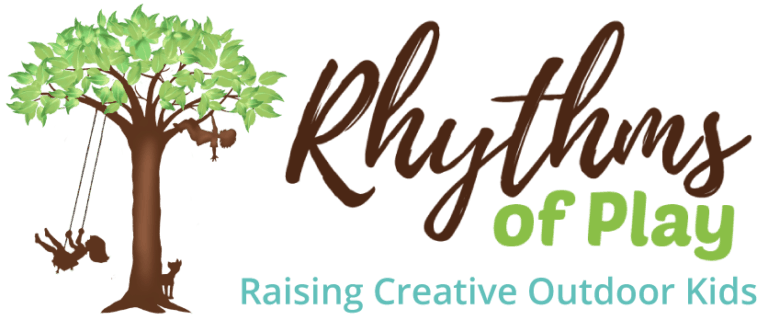
What fun ideas! Shadows are such a fun topic to cover and being able to get outside and play makes it even more so. Thanks for sharing!
Thanks! My daughter loves playing with her shadow so we are always coming up with fun new ideas. So glad you like them! 🙂
I love the shadow art pictures. My youngest likes jumping on my shadow when I’m walking along. I’ll give these ideas a go with her.
Oh, thanks for reminding me Debbie… Shadow tag is another fun game!
I think these shadow activities are a great way to teach children to understand the rules of reflection. The theory of reflection of light can help them in excelling in many games such as caroms. Thanks for sharing the pictures of this interesting activity. The kids look really cute in these pictures.
I agree Sachin, these shadow activities are a great way to understand some of the rules of reflection. So glad you like it!